Chris Baty's Blog, page 219
February 18, 2013
Self-Publishing vs. Publishing: How to Choose Your Path

Lynn is a New York Times bestselling author, who last wrote for us about how committing to your craziest ideas can lead to rediscovering the joy of writing. For the “Now What?” Months, she walks us through the biggest choice in publishing:
Once you’ve written a book there are many things to consider, including how to pursue publication for it. The two primary choices are
traditional via a publisher, or
independent via self-publishing
You’ve probably heard the slurs slung at both options (Legacy! Vanity! House Slaves! Wannabes!) but I’m not here to sneer. As a professional writer I’ve published both ways, so I know the merits and the drawbacks of each option. Also, my mama taught me never to name-call.
Traditional publishing means acquiring a publisher through the submission process. You query a publisher, tell them about your book, and wait for a response. While you’re doing this, a couple hundred thousand other writers—including me—are doing the exact same thing. A very few writers will receive a contract offer, and a few more with promising submissions will be asked to revise their books. Everyone else? Gets rejected. You may be one of the lucky few who get an offer on the first book you write and submit. I wasn’t; I wrote twenty-eight novels and racked up more than eleven hundred rejections in the ten years I spent pursuing publication before I received my first contract offer. Fortunately when it comes to writing I’m pretty tenacious—rather like a pit bull, in cleats.
Independent publishing allows a writer to sell their book on the market as soon as they decide to publish it. If the writer elects to use one of the digital self-publishing platforms, this can happen in the few minutes it takes to create an account and upload an e-book file. You don’t have to wait for an offer, or compete for a few slots with hundreds of thousands of other writers. Of course that means anyone else who wants to self-publish can and will, and that’s where your competition comes in.
There were 133,036 self-published books released in 2010, and 211,269 released in 2011. We don’t yet have the figures for 2012, but my guess is that it will be close to half a million.
Both publishing options offer some serious challenges. Most major traditional publishing houses accept only agented submissions, which means acquiring an agent to represent you, then paying your agent 15% of whatever you earn from any offer you accept. Once a publisher acquires your work they make the lion’s share of the decisions about it (and they will put that in the contract you have to sign.) Because the traditional publisher has all the expense involved with producing the work, they take the lion’s share of any sales, which for a typical mass-market novel is 92-94% of whatever it earns.
Independent publishing, on the other hand, demands a writer also serve as their own editor, cover artist, e-book production manager and publicist (or hire the freelance equivalent thereof, which is where the “free” option of self-publishing can become costly.) Writers who publish independently often can’t afford the hefty price of producing print editions, which most bookstores are unwilling to sell anyway. Most self-published titles are not given the same respect or consideration, so that’s another battle for the independent writer.
Depressed yet? Don’t be. Both options also offer excellent advantages. With a traditional publisher you’ll be provided with an editor, cover art, and a professional production that includes excellent distribution. With independent publishing you’ll have complete control over your product, the ability to publish whatever you like whenever you like, and a higher percentage of the royalties. We’ve all heard about writers who start out as independents, sell very well and transition to traditional publishing. There are also writers who pursue both traditional and independent publishing at the same time and make it work.
How you pick your pub is a business decision, not an illustration of your character, a demonstration of your ego, or a yardstick to size your IQ. If you view publication as an industry (which it is) you’re basically opting to either work with an established company (traditional) or set up your own business (independent.) My advice is to set your priorities, educate yourself, choose what’s right for you and stick with it—like a pit bull, in cleats.
Since her debut in 2000, New York Times bestselling author Lynn Viehl has published 47 novels in 8 genres, and is the host of Paperback Writer, a popular publishing industry weblog featuring writing advice, market info and free resources for writers.
Photo by Flickr user Jano de Cesare.
February 15, 2013
Straight-Talk from the Literary Agents at New Leaf

For our “Now What?” months, we wanted to be sure to get the perspectives of some very elusive publishing types: agents. Who are these mysterious creatures, and what are they looking for in your books? We recently held a chat on Twitter with the awesome folks of New Leaf Literary—Joanna Volpe, Kathleen Ortiz, and Suzie Townsend—about queries, publishing, and their best author advice for 2013:
What are your tips for a great author query?
“Get someone who hasn’t read your manuscript to read your query and give feedback. They should be intrigued and want to read more.” – Suzie (@sztownsend81)
“I love to see a good hook. What makes your story different from others? What makes it awesome? Like, super-awesome? Hook me in and get me to the sample pages. Query goal = accomplished.” – Kathleen (@KOrtizzle)
“There are a ton of query resources online. Check out Query Shark to start!” – Joanna (@JoSVolpe)
“In queries, I want to know the main character and the main plotline without anything weighing it down or confusing me. With queries, concise, well-edited, and professional is always best.” – Suzie
What are some of your query pet peeves?
“When your bio is longer than your pitch. You’d be surprised how many authors include too much about themselves or why the book is good. Just tell me what the story is!” – Joanna (@JoSVolpe)
“I can’t stand when a query asks me a lot of rhetorical questions or tells me to imagine something.” – Suzie (@sztownsend81)
“Being creepy. Don’t comment on agents’ pictures or say you know where they live.” – Suzie (Apparently, this happens more often than you’d think! – Ed.)
Should writers pay attention to genre trends?
“Don’t write for a trend. If you hear it’s popular now, it’s saturated on our end. Books are bought 12-24 months before pub. Write what you love. Make it different. And awesome.” – Kathleen (@KOrtizzle)
“I think it’s good for writers to be aware of trends, but I also think you have to write what you love.” – Suzie
“Genre trends do not matter. Write the story you are burning to write, edit it, love it—that’s all that matters to me.” – Joanna
In this day and age, why go with an agent vs. self-publishing?
“The thing to think about with self-publishing: are you going to market and publicize and get your book out there?” – Suzie
“Every writer is different. Some have no interest in handling the business behind their publishing. They just want to write. Some authors want to be more involved, so DIY works for them. Whatever route, an agent does more than just sell a book. We edit, coordinate publicity, advise, plan, and sell sub-rights.” – Joanna
“I don’t think it’s agent vs. self-publishing. I think the question should be more what is right for the author and the project: self-publishing, small press, traditional house, etc.” – Suzie
What is your favorite part of being an agent?
“My favorite part of being an agent is finding a new project in the slush that I love. And then selling that project, too!” – Joanna
“I love being able to work with so many writers and helping them turn a manuscript into a book. Holding the finished copy in my hands is so awesome.” – Suzie
“I also love looking to the future. How do we promote the upcoming book? How do we reach more readers? What’s next?” – Kathleen
What is your #1 piece of advice for a writer in 2013?
“Be willing to adapt.” – Joanna
“Do your research: not just about writing and craft, but also about publishing” – Suzie
“Write the best story possible, keep yourself informed on the industry, and have fun.” – Kathleen

Kathleen is the Director of Subsidiary Rights at New Leaf. She is interested in all genres of YA but is especially interested in a story set within another culture. On the adult side, she’s seeking romance titles, specifically urban fantasy and paranormal.

Suzie represents adult and children’s fiction. In adult, she’s looking for romance (historical and paranormal), and fantasy (urban fantasy, steampunk, epic fantasy). In Childrens’, she loves YA and is dying to find great Middle Grade projects.

Joanna represents all brands of fiction, from picture books to adult. She has an affinity for stories that have a darker, grittier element to them, whether they be horror, drama or comedy.
February 14, 2013
Valentines to Your NaNo-Novel
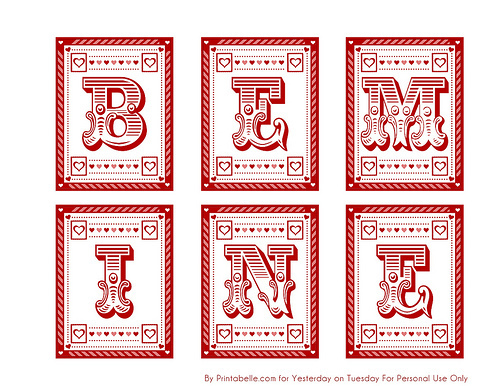
Happy Valentine’s Day, Writers! Today, @NaNoWriMo asked our followers to write a Valentine to their NaNo-novel. We got a flood of poems, some of them hilarious, some loving, all of them heartfelt:
I Love You… I May Have to Kill You.
I hate you, you’ve ruined my life… time to write more and cause my characters strife. @bqdfantasy
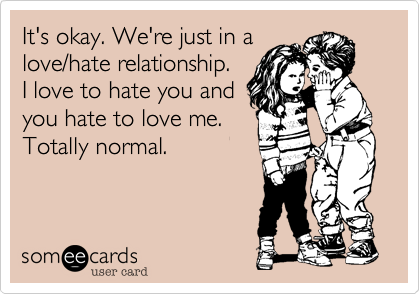
Roses are red, violets are blue, you may have potential but right now I kinda hate you. @AdorkableKati
Roses are red, violets are blue, I never want to edit another draft of you. @lost_limey
Roses are red, violets are purple, stop causing me anxiety you stupid novel. @Barnababe2010
Love Means Sometimes Having to Say…

“I’m sorry.” @TheMarianoGG
Roses are red / Violets are blue / I’m sorry that I / Never finished you @randominuyasha
I’m sorry / I’ve not been good to you / Please understand / I’m going through things / We’ll stroll through the park again soon. @GregLucM
We’re So Happy Together

My love for you is a giant clockwork robot, stomping flat the ghoulish hordes between us. @BookHutt
My novel is great / my agent agrees / now if an editor / would finally see! @freckles42
Roses are red, violets are blue, your plot’s non-existent, but I still love you. #toallmynanonovels @mizzelle
Plots more complex, characters deep, you fill my nights, and even my sleep. #novelpoems @_Almost_
I barely touched you, though I longed to do so, your mystery draws me in and though your words grow deeper, I wish for them all. @2cajuman2
keeping you away is a mistake / keeping you near me is my dream sake @Fukusigma
shall I compare thee to a summer’s day? Summer days are beautiful, magical and rife with hope and possibility… so… YES! @merrcherr
You’d Be Perfect If Only…
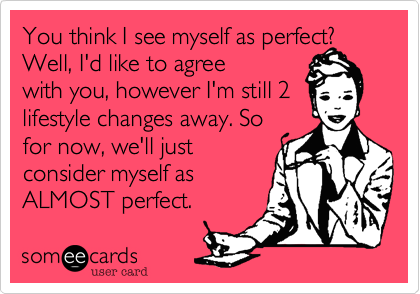
Roses are red, and so is my pen. You’ll thank me one day… now let’s edit again. @JCastoArdern
To write a book would be a treat… too bad my characters give me no sleep! #nanolovepoem @findabookforyou
Roses are red, grass is bright green, you’re not a script-writer - it’s a chapter, not a scene! @MaddyLeigh1994
We’re Going to Make It After All
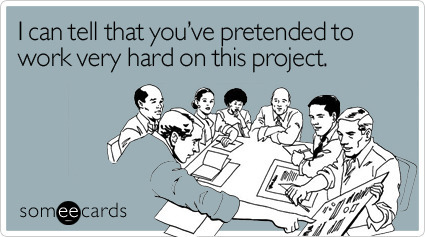
The road between us will not seem so far / once we embrace at last / and put our worries in the past. @MesserFan
where did you come from, • story spun out of my heart • we will meet again. #toallmynanonovels @mbquilts
‘Twas a long, bloody road / But my journey is through / My brains were all spent / Authoring you @UndeadRomeo
February 13, 2013
Hugh Howey: How NaNoWriMo Trained Me to Be a Professional Author
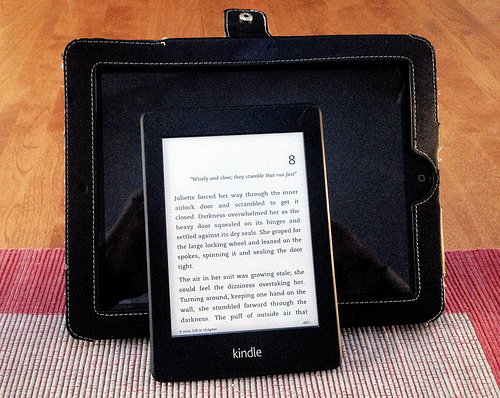
Just a few years ago, Hugh Howey couldn’t have anticipated his current well-deserved success. A three-time NaNoWriMo winner, he self-published
Wool
, only to see its momentum explode. A New York Times bestseller, it’s been optioned for a film by Ridley Scott, and will be published in hardback this March. For our “Now What?” Months, he’ll join Sarra Cannon for a self-publishing webinar next Monday, and tells us just how NaNoWriMo prepared him for a career:
Nobody has ever been so well-prepared for National Novel Writing Month success as I was in 2011. It was my third NaNoWriMo in a row. The previous two years had been wonderful successes. This time was going to be even better; I was going in with confidence and a game plan. For the first time ever, I’d actually outlined what I was going to write. I was champing at the bit to get started!
But then October happened.
A novelette I’d published in July through CreateSpace, a 12,000 word piece entitled WOOL, began to rack up sales and reviews unlike anything I’d ever written. It was like a dare. October was messing with me. As the month wore on, I began approaching a thousand sales of a single title in a single month. It was far more than I’d ever sold of anything in such a span of time. And a common theme ran through the reviews: Where was the rest of the story?
I didn’t have a rest of the story! I began to think I needed to drop my perfectly conceived novel and write more in this universe, instead. Here was my chance, the dream we all have of getting a sliver of a readership. I decided I would use NaNoWriMo as my springboard. I would give myself a chance to build on this tiny bit of momentum.
Since the short length of WOOL seemed to work so well, I chose to write three more stories for a total of 60,000 words. It helped that I was volunteering at my local library, the Watauga County Library in Boone, NC, with their NaNoWriMo Young Writers program. Owen Gray, a librarian there, is a huge supporter of NaNoWriMo. Being a model to him and his kids meant I couldn’t slouch.
I was also working a full time job and taking an astronomy class that included a night lab. Every ounce of my free time needed to go into writing. Many mornings, I would get up at 3 AM to get started. It wasn’t hard, because I was in love with my story. And the sales and reviews were continuing to pour in, which provided motivation.
By the end of November, I had exceeded my goals. Not only were the three stories complete, WOOL 2 was already edited, given cover art, and published on Amazon. At the wrap party with the library youth group, I was able to pull up my Amazon publishing dashboard and show a thousand sales of a story I’d started four weeks prior!
I can say with confidence that I wouldn’t have written the same books if I’d written them any other way. The compressed nature of a NaNo-novel makes for a tighter plot. It reinforces the importance of not taking a day off. NaNoWriMo isn’t a writing exercise for me. It trained me to be a pro.
By January, the Wool Omnibus was complete and self-published. It contained 5 stories and clocked in at 160,000 words, 80,000 of which had been written during NaNoWriMo. The Wool Omnibus has cracked the top 20 on the New York Times bestseller list. It won IndieReader’s Best Indie Book of 2012 Award in science fiction. Ridley Scott picked up the film rights this summer; it will be released in hardback by Simon and Schuster this March; and is being translated into 19 foreign languages.
I pinch myself every day. I still feel like the same kid working in a bookstore, taking classes at night, and writing in his spare time. What I do know is this: the festival of carpal tunnel that is NaNoWriMo has been the greatest thing to happen to me as a writer. For the past three years, it has led to books that I’ve been proud to publish. It has led to wonderful and lasting friendships. It got me in touch with my local library, made me feel like a hero to young writers, and taught me the importance of advertising my progress to the world.
I get emails from writers all the time who praise me for the word count indicators on my website. My response to this praise is invariable: “Have you ever heard of NaNoWriMo?” I ask. And then I tell them. I tell them how this outpouring of words has turned my life upside down. And that maybe they should look into it as well.
Last October 31 was a year to the day that I realized something was happening, something I could seize or ignore. And in November, my incredible writing journey didn’t just come full circle. It began anew. And yours did, too.
Where do you hope to be this fall, on the anniversary of your novel’s beginnings?
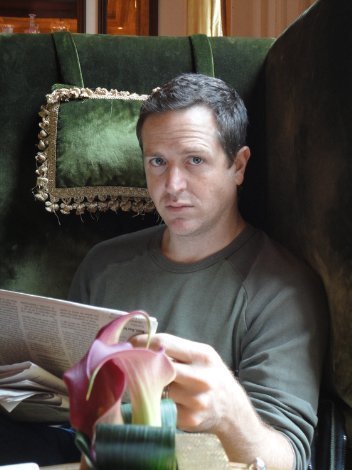
Hugh Howey is the author of the award-winning Molly Fyde Saga and the New York Times and USA Today bestselling WOOL series. Hugh lives in Jupiter, FL with his wife Amber and their dog Bella. When he isn’t writing, he’s reading or taking a photograph.
Photo by Flickr user Smieythe.
February 11, 2013
Be Brave: Why You Should Let Others Read Your Novel
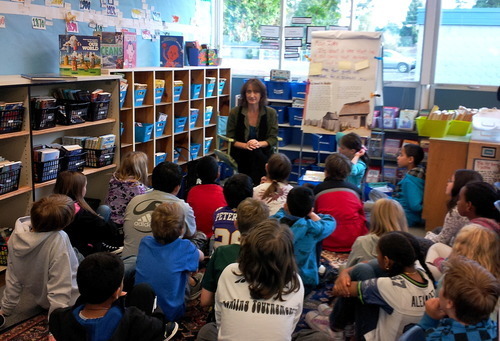
The “Now What?” Months continue with Kim Votry, Young Writers Program educator & author of My Own Magic. Sharing your novel can be scary, but Kim shares just why fortune favors the bold writer:
Although much is said about the solitary lives of writers, most writers I know enjoy community, and thrive on the exchange of ideas that happens when we get together. I know my students do! I teach a year-long novel-writing class to kids in grades 4-8 and the workshop-style critique has become vital to our revision process.
I’ve heard many authors advise against seeking feedback until a complete first draft is produced. But that advice is only right for a certain kind of writer.
As an author myself, I write intuitively, instinctively, and sometimes don’t know my own themes and conflicts until someone else reads my work and tells me. My writing group has been invaluable in this regard. The group read my first novel as I wrote it, chapter by chapter (not even in the right order!), helping me identify themes and character arcs. Even with all that help, I finished that novel and still had to ask them, What’s it about?!
This month, the kids are critiquing each other’s first chapters. It’s scary, but they want to know what their peers think. Does it sound all right? Do you like it? We always begin with praise for what’s working, then discuss sections that are confusing or that need more work. When a writer is confident that their writing has been met with acceptance, they’re more open to constructive criticism.
When I wrote My Own Magic, I needed First Readers: kids who were the right age for what I had written. I needed to know if the story worked for them.
Thank goodness for the NaNoWriMo Young Writers Program! Since My Own Magic is about NaNo in the classroom, I made a “readers wanted” announcement to the YWP community. People responded from around the world and, in the end, I chose about 20 first readers: total strangers who offered to read my novel. Their comments and suggestions made My Own Magic a better book.
Writers need feedback to make the writing better. How else could we know the wonderful sense of “of-course-ness” that hits when you’ve been describing your story to someone and suddenly you figure out how it needs to end? Or the joy of talking about your novel to a willing listener? Connect with other writers and make your writing better.

Kim Votry is an author, educator, and NaNoWriMo coach in the Pacific Northwest.
February 8, 2013
Sarra Cannon: The 6 Self-Publishing Tips That Nabbed Her 100,000 Readers

Sarra Cannon is about as fiercely independent as authors come. After completing NaNoWriMo in 2008 and 2009, she self-published her third YA novel, Beautiful Demons, in 2010. As part of the “Now What?” Months, Sarra will answer your questions in our “So You Want to Self-Publish” webinar with Hugh Howey on February 18. We caught up with Sarra to discuss the art of independent writing and writing what you love:
Self-publishing has really worked for you—your novels have sold over 100,000 copies! How did you pull that off?
I have no idea! Okay, so that’s not entirely true. While there is some mystery to how people found my books in the first place, I do have an idea of what helped most when I was getting started:
I published books back-to-back very quickly (two months apart, thanks to NaNoWriMo!). The faster you can get content out there, the faster your books will find an audience. A lot of newly self-published writers spend too much time stressing out about social media and marketing; those are always good, but writing and publishing more books is hands down the best marketing tool an indie author has.
I hired a professional cover artist to completely redesign my covers. The new covers were well branded so that they were eye-catching and easily recognized as a set.
I started submitting my novels to book bloggers for review.
How did you make the decision to self-publish?
In the summer of 2010, I went to the Romance Writers of America conference and pitched a novel to an agent for the first time. After I sent her some pages at her request, she quickly sent a rejection email. She left a note at the bottom of the form letter, saying that the story hadn’t stood out enough for her. I was crushed. I had actually changedmy story several times to match what I thought she was looking for. When she rejected my novel, I realized I’d become obsessed with trying to write a novel the traditional world would find marketable.
For me, that kind of thinking was destroying my joy of writing. I had come to a crossroads. I could either continue down a path that may not ever lead to a contract, or I could take my fate into my own hands and put my books in front of readers. I chose the readers and have never looked back.
So tell us a little about your book series!
The Peachville High Demons series opens with Harper, a 16-year-old orphan whose case worker is taking her to a home for troubled girls in the small Georgian town of Peachville. Harper is given an ultimatum: stay out of trouble or get sent to juvenile detention until her eighteenth birthday.
Unfortunately, trouble seems to follow Harper around, and on her first day at school, she makes enemies of the most popular girls at Peachville High. When one of them turns up dead a week later, all signs point to Harper as the murderer. As she tries to prove her innocence, Harper discovers that the small town of Peachville has a very big secret. The series is fast-paced and full of twists and turns. There’s mystery, magic and of course, romance.
Lots of WriMos dream of publication, and of sales numbers like yours. Do you have any tips for people who want to self-publish?
Self-publishing can be scary. There’s so much to learn, and it can seem overwhelming.
Study Amazon like it’s your job. There is a wealth of information waiting to be discovered in the Kindle store. Are you writing science fiction? Find the best-seller lists for science fiction and study the covers, the content, the prices. What works? What doesn’t? Do readers in your genre prefer series or stand-alones? Don’t copy anyone, but be smart about what readers expect.
Connect with like-minded authors. Most indie authors are extremely helpful and willing to share their knowledge.
Write, write, write! Get your you-know-what in the chair and write more books: write the books of your heart and don’t let stress steal your joy.
Would you ever consider signing a book deal with a major publisher, or are you happier on your own?
I am incredibly happy on my own and passionate about self-publishing. The creative control I have as an indie author is priceless. I personally wouldn’t trade that for the world. Everyone is free to make their own choices, but I don’t see the advantage of going with a traditional publisher right now.
What I can see myself signing are deals for movie or graphic-novel adaptations. Possibly foreign rights. The only thing I’m certain of is that I want to maintain creative control over my primary work.
You can find Sarra:
On her blog.
On Facebook.
@sarramaria
February 5, 2013
Marissa Meyer: Slowing Down to Let Lightning Strike Twice

Marissa Meyer is one of our favorite folks ever: not only is she a NYT bestselling author, who’s published three of her NaNo-novels, she’s also an all-around excellent person. And we’re thrilled that today, as she releases her new novel, Scarlet , she’s taken the time to send some pep to all you writers deep in revision during the “Now What?” Months.
Stars above, Fellow Novelist, you did it!
Whether you tackled the 50K challenge last November or have spent the past five years plugging away at your first draft, you now stand among the few, the proud, the somewhat mad. You wrote a novel.
Now you’re ready to tackle whatever comes next. Which is, naturally, the process of revision. There is a lot that can be said about revision. Countless magazine articles and blog posts and even entire books* have been written on this very topic.
Some writers loathe revisions, while others love them. Some writers find them tedious and agonizing, while others think they hold more magic than the first draft. (I fall into the latter group, myself.) Whichever camp you belong to, the fact is that revisions are necessary. Revisions eradicate inconsistencies and fill plot holes. They increase tension and deepen characters. They bring worlds to life and make your writing sing.
So here’s my advice as you embark on this exciting second leg of your noveling quest:
Take your time.
I mean it. Don’t rush the revision process. Yes, I know it can be painful to pace yourself now, when you seem so very close to a finished product. Maybe you’ve already bookmarked the websites of your preferred literary agents, drafted your query letter, and made a list of famous authors you think might be interested in writing a blurb for your jacket. Maybe you’re ready to jump in—right now!
But rushing through the revision process can not only result in a manuscript that may not be as finished as you think it is, it can also cheat you out of some of the most euphoric discoveries about your own novel. Remember when you were writing that first draft and you got an out-of-nowhere idea for such a brilliant plot twist you actually squealed out loud—prompting everyone on the bus to slooowly shift away from you?
Well, guess what. Those lightning-strike moments happen during revision, too! And they have the potential to take your novel to an entirely new place. To raise it above all those other manuscripts that cross an agent’s or editor’s desk every day.
So take this time to re-explore your story from the beginning. Experience every plot twist anew and ask if you can make it even more exciting, even more surprising, even more intense. Delve into the backstories and motivations of every character and question if they can be more intriguing and more insightful. Consider foreshadowing, sensory details, underlying themes, character quirks, building suspense, and subplots that tie up nice and neat at just the right time. I don’t know about you, but I certainly can’t keep all these things in my brain at once, which is why I work them into the story gradually, one draft at a time. Layer upon layer upon layer.
Take your time. Be patient. Experience the thrill of falling in love with your book all over again. Eventually you’ll reach a point where there’s nothing else you can do for your novel. You’ll have written the best book you’re capable of, and it will finally be ready to be sent out into the world.
Trust me, it will be worth the wait. Happy Revising, Novelists!
Marissa
* For more focused advice on the revision process, I highly recommend Revision and Self-Editing by James Scott Bell.
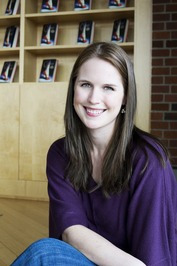
Marissa Meyer’s 2008 NaNo novel, Cinder, debuted on the New York Times bestseller list. Scarlet: Book Two of the Lunar Chronicles (in which Little Red Riding Hood is re-envisioned as a feisty spaceship pilot) will be released on February 5. Marissa lives in Tacoma, WA, with her husband and three cats and is currently planning her cosplay for this year’s San Diego Comic-Con.
Keep up with Marissa:
At marissameyer.com
On Twitter
On Facebook
On Goodreads
Top photo by Flickr user pixelfreund.
January 31, 2013
The Third Annual NaNoWriMo Pitchapalooza!
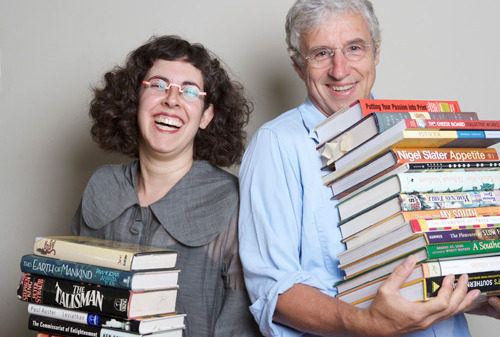
You wrote your 50,000 words (or got pretty close!). You’re a winner. You felt the high. Now what are you going to do with your precious manuscript? That’s where we, The Book Doctors, come in.
For those of you not familiar with Pitchapalooza, here’s the skinny: You get 250 words to pitch your book. Twenty-five pitches will be randomly selected from all submissions. We will then critique the pitches online so you get to see what makes a great pitch. We will then choose one winner from the group. The winner will receive an introduction to an agent or publisher appropriate for his/her manuscript. We will also crown a fan favorite who will receive a free one-hour consult with us (worth $250).
Beginning February 1, 2013, you can email your pitch to nanowrimo@thebookdoctors.com. All pitches must be received by 11:59 PST on February 28, 2013. The 25 random pitches will be posted on March 5, 2013. Winners will be announced on March 15, 2013. Anyone can vote for fan favorite, so get your social media engine running as soon as the pitches go up!
Read on for more about past Pitchapalooza winners, and tips on just how to pitch your novel:
Our first Pitchapalooza winners, Nura Maznavi and Ayesha Mattu, published a book, Love InshAllah, that is now in its fifth printing. Then there’s Pitchapalooza winner and NaNoWriMo veteran, Gennifer Albin. After she won Pitchapalooza, one of New York’s top agents sold her dystopian novel in a three-book, six-figure deal. Her book, Crewel, just came out this past fall and has been lauded in the New York Times. Cathy Camper and Raul Gonzalez are our latest winners with great news: they’ve landed a two-book deal for their middle-grade, graphic novel, Low Riders in Outer Space.
Are you feeling a little unsure about exactly how to craft your pitch? We’ve got 10 Tips for Pitching:
A great pitch is like a poem. Every word counts.
Make us fall in love with your hero. Whether you’re writing a novel or memoir, you have to make us root for your flawed but lovable hero.
Make us hate your villain. Show us someone unique and dastardly whom we can’t wait to hiss at.
Just because your kids love to hear your story at bedtime doesn’t mean you’re automatically qualified to get a publishing deal. So make sure not to include this information in your pitch.
If you have any particular expertise that relates to your novel, tell us. Establishing your credentials will help us trust you.
Your pitch is your audition to show us what a brilliant writer you are, it has to be the very best of your writing.
Don’t make your pitch a book report. Make it sing and soar and amaze.
A pitch is like a movie trailer. You start with an incredibly exciting/funny/sexy/romantic/etc. close-up with intense specificity, then you pull back to show the big picture and tell us the themes and broad strokes that build to a climax.
Leave us with a cliffhanger. The ideal reaction to a pitch is, “Oh my God, what happens next?”
Show us what’s unique, exciting, valuable, awesome, unexpected, about your project, and why it’s comfortable, familiar and proven.
P.S. Like last year, we’re offering free 20-minute consultations (worth $100) to anyone who buys a copy of The Essential Guide To Getting Your Book Published. Just attach a copy of your sales receipt to your email and we’ll set up your consultation.
January 29, 2013
Published NaNo-Novelist Lydia Netzer on Shine Shine Shining Up Your Novel
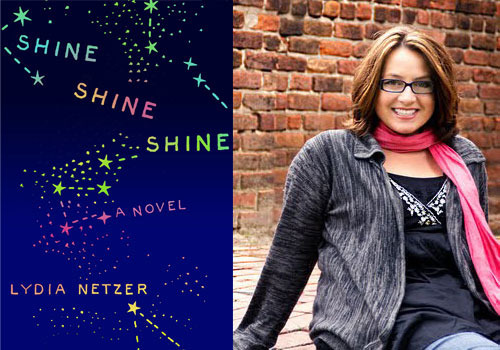
Lydia Netzer sold her literary novel Shine Shine Shine and soared to stellar heights as a New York Times Notable Book for 2012, and an Amazon Best Books of the Month selection. As part of our Now What? Months, Lydia took the time to tell us how NaNoWriMo failures can become literary masterworks with a little perseverance and revision:
I am evidence that the benefits of NaNoWriMo are not always apparent! Sometimes the most embarrassing, hair-tearing failures can turn into winners—just not always on November 30.
I attempted NaNoWriMo twice with the story that eventually became Shine Shine Shine. The first time, it manifested as a novel about three sisters and their husbands. I got about halfway through the month on schedule, but my inability to stop editing brought me down and I did not finish.
I came away frustrated, convinced that NaNoWriMo should not be attempted with literary fiction. I told myself that this type of book needed stewing, pondering, getting one paragraph at a time on paper, and that the high speed devil-may-care production values of NaNoWriMo made it impossible to even draft the kind of book I wanted to write.
Still, I had learned from those two weeks of work that I was only interested in the middle sister in my story. While I had not “won,” I realized grudgingly that finding my main character was a significant milestone. I continued slow work on this “serious” book while successfully participating in two NaNoWriMo sessions; two YA fantasy novels were gleefully finished with hours to spare, and I was convinced I’d found the secret to success: genre.
But meanwhile Shine Shine Shine ground to a halt. There was a scene I knew was going to be dreadful to write. I just couldn’t get past it. Several drafts came and went, but the scene never worked. (For anyone who has read the book, this is the scene in the hospital when Sunny takes her mother off life support.) It was a charged, emotional moment in the book for me, and as an unpublished mother of young children with no pressure to finish and plenty to distract me, it was very easy for me to say “It’s too hard”.
Then November came, and I had a crazy idea. Maybe if I could start over on this novel and come at this scene with all kinds of NaNo-momentum and all my torches lit, I could get it written and move on. Five-thousand words came and went, ten-thousand words came and went, and then at 14K, I hit the scene. I can remember sitting there in my darkened dining room with my laptop on the table, feeling like both the team of horses and the coachman, flogging myself through it…
And I got it done.
With all the edits the book went through, that scene actually changed very little from that first draft. I know that the reason I was finally able to write it was the ethos of NaNoWriMo: Silence your inner editor. Don’t worry; just write. Go, go, go. It was counter-intuitive to the first conclusion I’d made about NaNoWriMo—instead of being wrong for literary content, NaNoWriMo gave me the freedom and urgency to push myself through without questioning every word. The speed-writing got me to a place I couldn’t get to via calm reflection.
It took me about nine more months to finish the book. I sent it to my agent, and she and I did a major structural revision (that hard scene didn’t stay at the 14,000-word mark), and we signed a contract. A few months later, she sold the book to St. Martin’s Press. My editor and agent and I sat down and hashed out another revision.
A lot of people frown on NaNoWriMo, believing it produces reams of garbage, and that writing quickly can only lead to writing poorly. We’ve all run into this attitude. Maybe we’ve had someone say “Why would you waste your time writing something you know will be bad?”
I respectfully disagree with these people, as I have found that during this mad dash, I find different layers of my projects that I would not have been pushed to uncover at a steady, reasonable pace. For busy people it’s permission to prioritize the work for just one month—to push aside other commitments during a limited time frame, and let the novel truly take over our brains. For a parent with young children, this can be life-saving. For anyone, the idea of participating in an event where so many are excited about writing is a heady rush. And it’s valuable. It’s something I will always want to experience again. I’m proud to show off Shine Shine Shine after its many drafts, its long history, its NaNoWriMo beginnings.
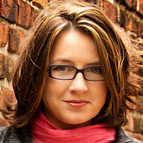 Lydia Netzer was born in Detroit and educated in the Midwest. She lives in Virginia with her two home-schooled children and math-making husband. When she isn’t teaching, reading, or writing her next novel, she plays the guitar in a rock band. Keep up with her:
Lydia Netzer was born in Detroit and educated in the Midwest. She lives in Virginia with her two home-schooled children and math-making husband. When she isn’t teaching, reading, or writing her next novel, she plays the guitar in a rock band. Keep up with her:
On Facebook
On Twitter
At her blog
Author photo by Katie Weeks.
Wrimos, have you had novels that required multiple NaNoWriMos and/or revisions to successfully crack?
January 24, 2013
Four Ways to Launch a Kick-Butt Writing Group
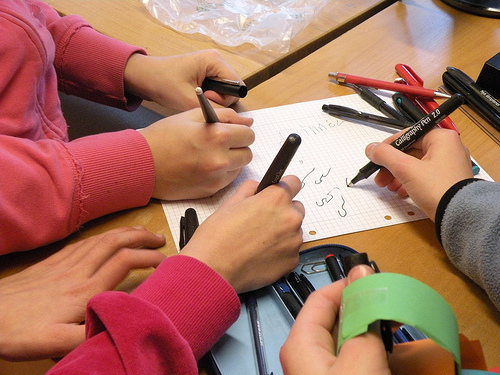
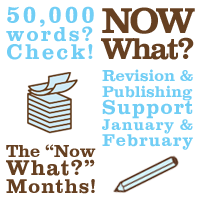 We couldn’t continue Now What? Months without picking the brains of our novel-writing community. The young writers of YWP already chimed in, and today, Sarah Mackey shares what our Municipal Liaisons have learned about writing groups over years of hosting write-ins during November:
We couldn’t continue Now What? Months without picking the brains of our novel-writing community. The young writers of YWP already chimed in, and today, Sarah Mackey shares what our Municipal Liaisons have learned about writing groups over years of hosting write-ins during November:
So you want to start a writing group: Awesome! The thing is, there are a lot of different types. You may know right away what type you want to belong to, or you may be unsure. Let’s start by breaking down the options. Remember, every individual writing group will have their own little quirks and identity but we’re looking at the big picture!
Critique Groups
These writing groups focus on sharing their work with each other and offering feedback. Here are a few different ways you can set up the structure of this type of group:
Focus each meeting on a single group member’s writing. Distribute the piece ahead of time so members can arrive with feedback and suggestions.
Break up into pairs or small groups. That way each unit can exchange work and comment on each other’s writing. People can be divided by genre, preference of feedback style, or randomly.
Exchange critiques electronically, either through a site like critiquecircle.com or scribophile.com, or less formally via email or mailing list. This can be a useful way to handle feedback if your group doesn’t want to focus on individual critiques at a meeting.
Communal-writing Groups
These groups are far less structured than critique groups. Meetings for these groups will resemble a NaNoWriMo write-in, with folks mostly working on their projects, chatting about what they’re writing, and asking questions of the other participants.
How formal and structured these meetings are depends on the members of your group. Some folks prefer a quiet atmosphere where they can focus and get a lot done, others prefer a casual atmosphere where they’re free to chat.
Discussion-based Groups
These types of groups focus on guided discussions or presentations. Each meeting has a topic, and either a special guest presents on the subject, or attendees participate in a facilitated discussion.
Potential topics for discussion include but aren’t limited to:
Plotting
Characters
Point of View
Dialogue
Dealing with writer’s block
Genre
Querying
Revision
Agents, and how to find one
Traditional vs. self-publishing
This can also just be an element of a group. Flexibility and adaptability is key!
Virtual Writing Groups
This is a great option for far-flung groups who don’t have the option to meet in person. This can also be your ticket if you don’t know many writers in your immediate area. So many tools are now available for you to have a thriving writers group online!
Here are a couple of suggestions to help you get started:
Be careful about where you post your content. If you’re posting material for sharing or critique, be sure you know the technicalities behind publishing something online, and consider having a locked or private group for such things.
Don’t be afraid to experiment until you find what works for you! Try a Google Hangout to emulate the in-person feel, or set up a chat room and designate times where you get together and talk about your writing. Facebook, Twitter, Google Plus, Tumblr—there are a ton of ways to stay in touch these days. Don’t be afraid to try out a bunch until you find the one you like best.
We’ve got even more tips and resources for creating and running a successful writing group on our site.
Photo by Flickr user Opedagogen.
Chris Baty's Blog
- Chris Baty's profile
- 63 followers



